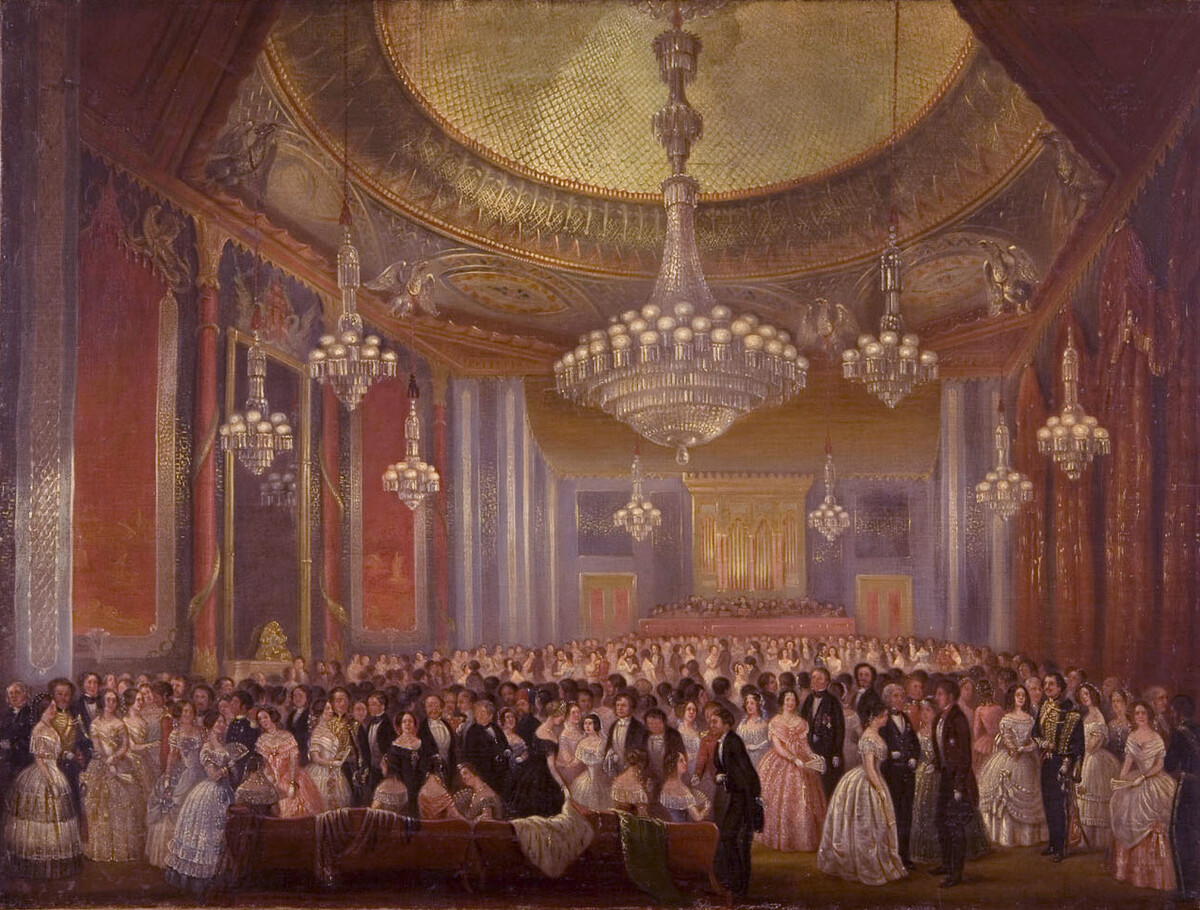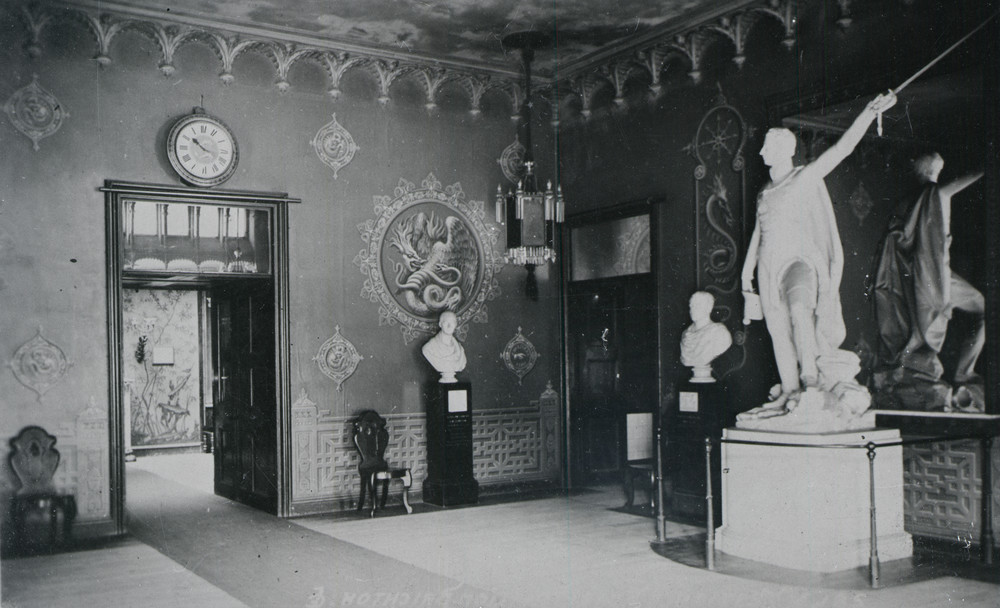People’s Palace

On 19 June 1850, the Royal Pavilion became the property of the people of Brighton.
Queen Victoria was paid £53,000 for the former palace, with a loan raised direct from the Bank of England. The result was a personal triumph for Lewis Slight, Clerk to the Town Commissioners, who had lead negotiations to purchase the building.
On 28 June 1850, Slight was given the honour of opening the gates at a public ceremony. Over the next six days 27,000 people flocked to see the Pavilion, but all they saw was an empty building. The Pavilion had been stripped of all of its furnishings, which remained the property of the Crown.
Work soon commenced on restoring the grand rooms on the ground floor, and this was celebrated with a reopening ball in the Music Room on 21 January 1851.
A key figure in the early restoration of the Royal Pavilion was Frances de Val. A gas explosion in the Music Room in 1863 caused the building to be closed for repairs. De Val used this opportunity to investigate what had happened to the Pavilion’s original furnishings, and found many of them had not been unpacked since their removal from the Pavilion. De Val persuaded Queen Victoria to give some of these pieces to the town.


Famous Guests and Civic Pride
Over the following decades the Pavilion received many famous visitors. Royal visitors included the King of the Belgians (1867), Emperor Napoleon III of France (1872), the Emperor of Brazil (1877) and the Shah of Persia (1889). US President Ulysses S Grant visited in 1877, and writers including William Makepeace Thackeray and Oscar Wilde gave lectures here.
But the Pavilion was also a place for civic pride. Several rooms on the upper floor were used for the first version of Brighton Museum, while the Red Drawing Room was reserved for use as the Mayor of Brighton’s office. The Entrance Hall became a ‘Hall of Fame’ of local worthies, with several busts of important Brighton men. Pride of place was given to a towering sculpture of Captain Pechell. The son of a longstanding MP for Brighton, Captain Pechell had been killed in 1855 during the Crimean War.
The Pavilion was also used for popular entertainments. A Children’s Ball was a regular feature of the late nineteenth and early twentieth centuries. In 1874 the Pavilion was even used to host seances, when an American medium, Annie Eva Fay, gave a series of public performances in the King’s Apartments.

War and Restoration
During the First World War the Royal Pavilion was given to the War Office for use as a military hospital, and it did not return to the town until 1920. Money paid by the War Office for repairing wear and tear to the building was used to fund further restoration.
Queen Mary, who had visited the Pavilion several times during the war, took particular interest in the building. She returned numerous original features of the palace, including eight magnificent Spode china and ormolu oil lamps which had been designed for the Banqueting Room in 1817. These were the first freestanding pieces to return to the Pavilion since its days as a royal palace.
The Pavilion also came under the control of Henry Roberts, the director of Brighton’s Library and Museum.
During the Second World War the Royal Pavilion played its role on the Home Front. The grounds were often used for public events such as war bond sales, and for demonstrating pig farming. The basement of the Pavilion was used as an Air Raid Shelter.
After the war, director Clifford Musgrave introduced a series of Regency Exhibitions in the Pavilion. More original items in the royal collections were returned to the building, and by the late 1960s the building was presented as a restored palace.
Restoration work has continued to this day, but it has not been easy. The Music Room has proven particularly ill-fated: it was severely damaged by an arson attack in 1975, and suffered further damage during the Great Storm of 1987.